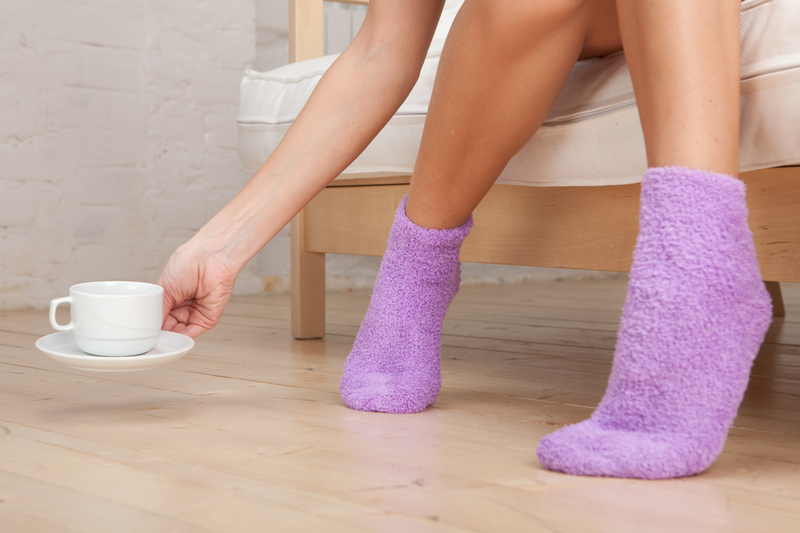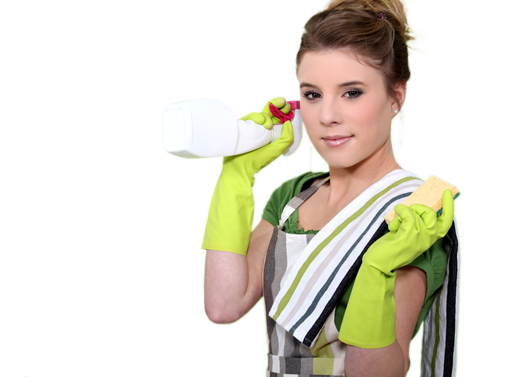Grease Eradicated: Simple Tips for Enamel Oven Tray Cleaning
Posted on 01/10/2025
Grease Eradicated: Simple Tips for Enamel Oven Tray Cleaning
If you've ever cooked a delicious roast or baked a cheesy lasagna, you know how quickly grease and grime can coat your enamel oven trays. While these trays are designed for high-heat performance and easy cleaning, stubborn stains and baked-on residues can seem impossible to remove. In this comprehensive guide, we'll uncover how to eradicate grease and restore your enamel oven trays to their original shine with minimal effort. Discover eco-friendly solutions, professional hacks, and easy maintenance tips for all your enamel baking tray cleaning needs.

Why is Cleaning Enamel Oven Trays Important?
Regular cleaning offers more than aesthetic benefits. A grease-free enamel oven tray delivers even heat distribution, reduces the risk of smoke in your oven, and helps baked goods come out perfectly each time. Neglecting this crucial chore may lead to unpleasant odors, flavor transfer, and even damage to your enamel coating.
- Improved food taste: Prevent flavor mixing from lingering residues.
- Longer tray life: Stop corrosive stains from eating away at enamel.
- Safer cooking: Eliminate burn risks from accumulated grease.
- Enhanced oven efficiency: Clean trays boost heat conduction and cooking results.
Common Challenges with Enamel Oven Tray Cleaning
Enamel trays, prized for their durability and beautiful finish, still present challenges when it comes to removing grease and burnt-on grime:
- Stubborn baked-on food that resists scrubbing
- Grease stains that spread and reappear after cleaning
- Risk of scratches if using abrasive tools on the enamel surface
To completely eradicate grease from enamel oven trays, it's crucial to use the right techniques and materials--many of which you likely already have at home.
Top Tips: How to Clean Grease from Enamel Oven Trays
1. Act Fast with Soaking Solutions
One of the most effective ways to lift grease from enamel is soaking. As soon as your tray has cooled to a safe temperature, remove as much grease and food debris as possible with paper towels. Then:
- Fill the tray with very hot water (not boiling, to avoid damage).
- Add a generous squirt of dishwashing liquid known for cutting grease.
- If available, add 1-2 tablespoons of baking soda for extra stain-lifting power.
- Let the tray soak for at least 30 minutes to an hour. For severe buildup, overnight is best.
After soaking, use a soft sponge to gently scrub the tray. This helps degrease enamel baking trays without risking scratches.
2. Try Vinegar and Baking Soda for Tough Stains
If you notice persistent brown or yellow stains (often a mix of old grease and burnt sugars), it's time to harness the power of natural cleaning allies.
- Sprinkle baking soda over the damp tray, focusing on stains.
- Spray or pour white vinegar over the baking soda. The resulting fizz helps lift residues.
- Let the mixture bubble for 10-15 minutes before scrubbing gently with a non-abrasive sponge.
- Rinse thoroughly and dry with a soft cloth.
This gentle combination can be repeated as needed--without harm to the enamel tray's glossy finish.
3. Use Paste Solutions for the Worst Baked-On Grease
For severely greasy oven trays, a cleaning paste can provide targeted, long-lasting contact with stains.
- Mix 3 parts baking soda with 1 part water (or hydrogen peroxide for extra strength) to form a paste.
- Spread this paste generously over greasy and stained areas.
- Let sit for 20-30 minutes (even up to an hour for tough spots).
- Wipe and rinse. The paste should have softened the grease for easy removal.
4. Avoid Scratches: Choose Safe Tools
While the urge to reach for steel wool or harsh scouring pads is understandable, these can scratch and dull the enamel surface, making it harder to clean in the future. Instead:
- Use nylon or cellulose sponges (non-scratch rated).
- Consider a soft-bristled brush for tight corners and edges.
- If a scraping tool is needed, choose a plastic or silicone spatula--never metal.
Advanced Techniques for Cleaning Enamel Oven Trays
How to Remove Burn Marks from Enamel Oven Trays
Burnt-on marks, especially from sugary spills or high-fat foods, can bond with the enamel if left untreated. To tackle them:
- Combine equal parts baking soda and coarse salt for a mildly abrasive but safe scrub.
- Add a little water to form a slurry.
- Rub gently in circles and let sit for 10 minutes before rinsing.
- If marks remain, try a vinegar soak (pour hot water and half a cup of vinegar, soak 1 hour).
Never use harsh oven cleaners directly on enamel trays--they can damage the coating and pose a health risk.
Dealing with Persistent Grease Buildup
If you've inherited a well-used tray or face months of cooking oil residues:
- Preheat your oven to 100?C (212?F) and place the tray inside for 10 minutes. This softens old grease, making removal easier.
- Remove the tray (wear oven mitts!), fill with hot water, and use your preferred soaking or paste method.
- For extremely stubborn areas, a small amount of dishwasher powder mixed to a paste can be applied with care--rinse thoroughly afterward.
Caution: Test any new cleaning solution on a small area first to avoid discoloration.
Eco-Friendly and Home Remedies for Enamel Tray Cleaning
If you prefer green cleaning, there are plenty of gentle, effective methods to degrease enamel oven trays without chemicals:
- Lemon and salt scrub: Cut a lemon in half, dip in coarse salt, and rub over greasy spots. The acidity dissolves grease, while salt gently exfoliates.
- Steam cleaning: Place the tray in the oven, fill with hot water and a dash of vinegar, and let the steam work on residues for 30 minutes. Finish with a simple wipe-down.
- Enzyme-based cleaners: Look for plant-derived products designed to break down grease. These are biodegradable and kind to enamel coatings.
Frequently Asked Questions: Enamel Oven Tray Cleaning
Can I Put My Enamel Oven Tray in the Dishwasher?
Most modern enamel trays are technically dishwasher-safe. However, repeated dishwasher cycles with harsh detergents may lead to dulling of the enamel over time. To prolong the life and appearance of your tray, handwashing is best, especially when dealing with heavy grease or stains.
Is It Safe to Use Oven Cleaner on Enamel Baking Trays?
Most oven cleaners contain caustic chemicals designed for metal racks or oven interiors, not for enamel finishes. Using such products can cause fading, cracking, and even toxic residue on your trays. Stick to the gentle methods listed above for safe and effective enamel care.
How Often Should I Clean Grease from My Enamel Oven Tray?
Aim to at least wipe your enamel tray after every use. For deeper cleaning, especially after roasting or baking greasy foods, perform a soak-and-scrub before residue gets the chance to accumulate. Regular maintenance prevents excessive buildup and keeps your oven and kitchen smelling fresh.
What Should I Avoid When Cleaning Enamel Ovenware?
- Avoid harsh abrasives (steel wool, metal pads).
- Don't use bleach or oven spray--these erode enamel.
- Refrain from thermal shocks (like rinsing hot trays with cold water).
- Never use serrated or metal utensils to scrape residue.
All these precautions protect your tray's non-stick, glossy surface and enhance longevity.
Preventing Grease Buildup on Enamel Oven Trays
Prevention is always easier than cure. Employ these practical tactics to keep your enamel oven trays grease-free for the long term:
- Use parchment paper or silicone baking mats when roasting or baking sticky foods.
- Wipe the hot tray with paper towels immediately after use to absorb fresh grease.
- Perform regular maintenance soaks--even if no visible residue is present.
- Apply a thin layer of oil before cooking to create a protective barrier (don't overdo it).
- Store trays dry to prevent water spots and maintain the enamel sheen.
With these habits, you'll rarely encounter the kind of stubborn buildup that requires tough action!
Recommended Products for Enamel Oven Tray Cleaning
For the best results, consider stocking your kitchen with:
- High-quality dishwashing liquid (grease-cutting formula)
- Non-scratch sponges and soft brushes
- Baking soda and white vinegar
- Plastic or silicone scrapers
- Enzyme-based eco cleaners for a green alternative
Avoid: metal scouring pads, harsh oven sprays, and bleach-based products.
Signs Your Enamel Tray Needs Replacement
- Chipped, cracked, or peeling enamel
- Rust spots where the coating has worn through
- Persistent dark stains that resist even gentle abrasives
- Noticeable loss of non-stick performance
If your tray displays these issues, it may be time for a safe, new enamel baking tray--especially if you use it for daily baking or roasting.

Conclusion: How to Keep Enamel Oven Trays Grease-Free
Eradicating grease from enamel oven trays isn't simply about aesthetics. Clean trays impact flavor, food safety, and the longevity of your beloved bakeware. To achieve sparkling, grease-free enamel trays:
- Act quickly after every use with soaking and gentle scrubbing.
- Utilize home remedies like baking soda, vinegar, and lemon for natural cleaning power.
- Avoid harsh chemicals and tools that might scratch or dull the enamel surface.
- Prevent buildup with regular maintenance and use of protective liners.
With these simple, effective steps, you'll ensure your trays remain a kitchen staple for years to come--always ready to deliver perfectly cooked meals without the worry of lingering grease.
Remember: a little diligence goes a long way in maintaining your ovenware's beauty and performance!
Ready to Say Goodbye to Grease?
Put these tips into practice and enjoy hassle-free baking, roasting, and oven-fresh meals. For more home and kitchen cleaning advice, explore our related articles on oven maintenance and care for enamel cookware.
Grease eradicated, baking elevated!





